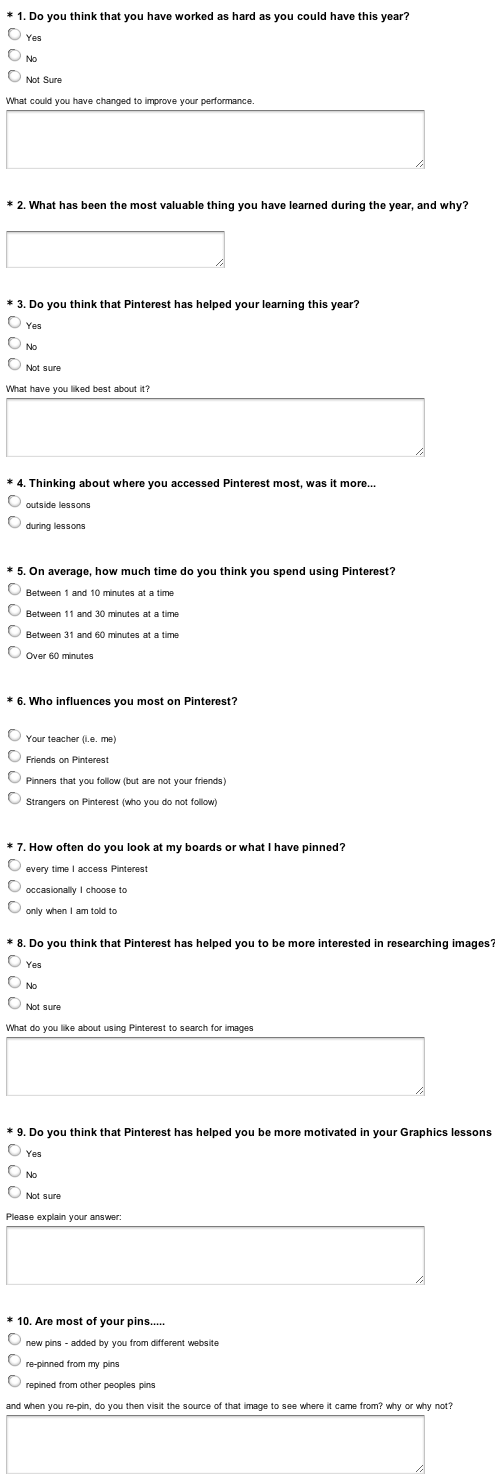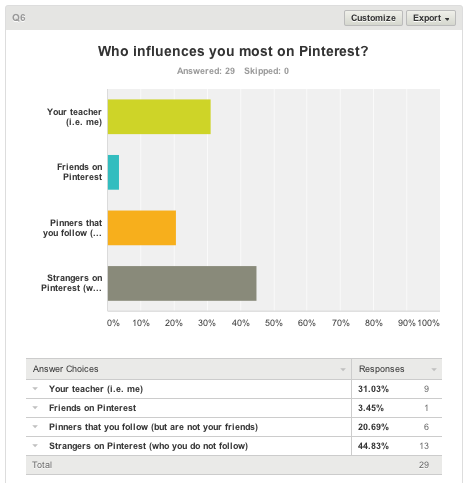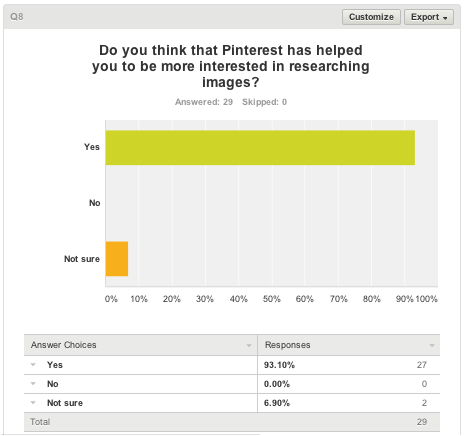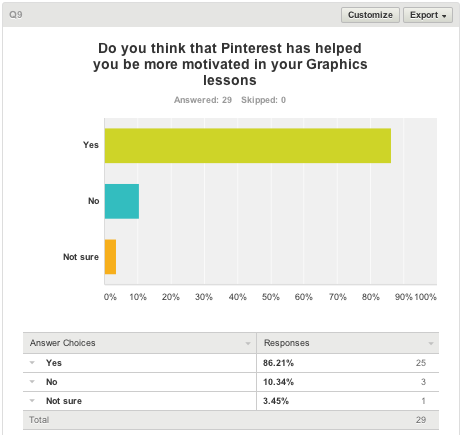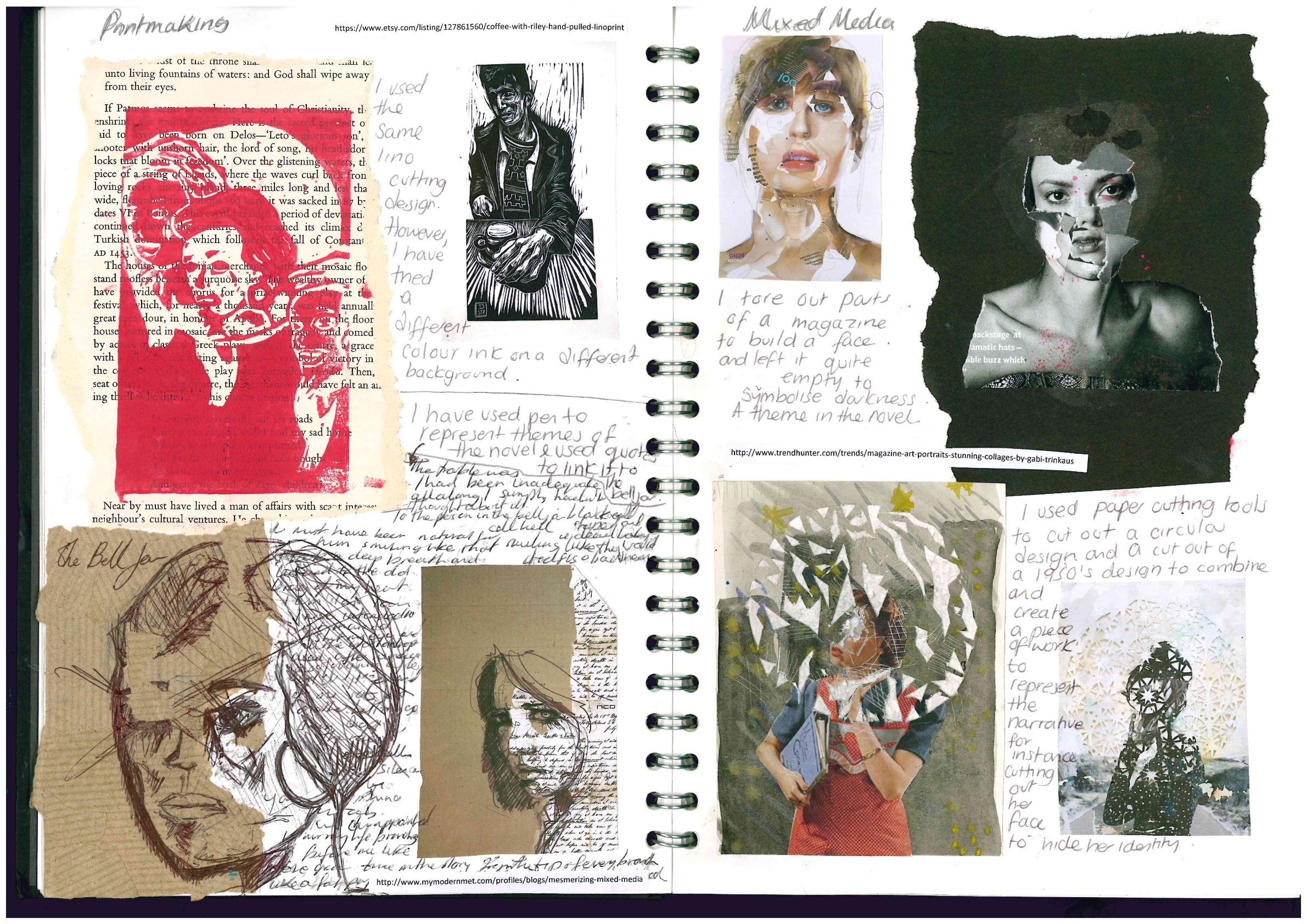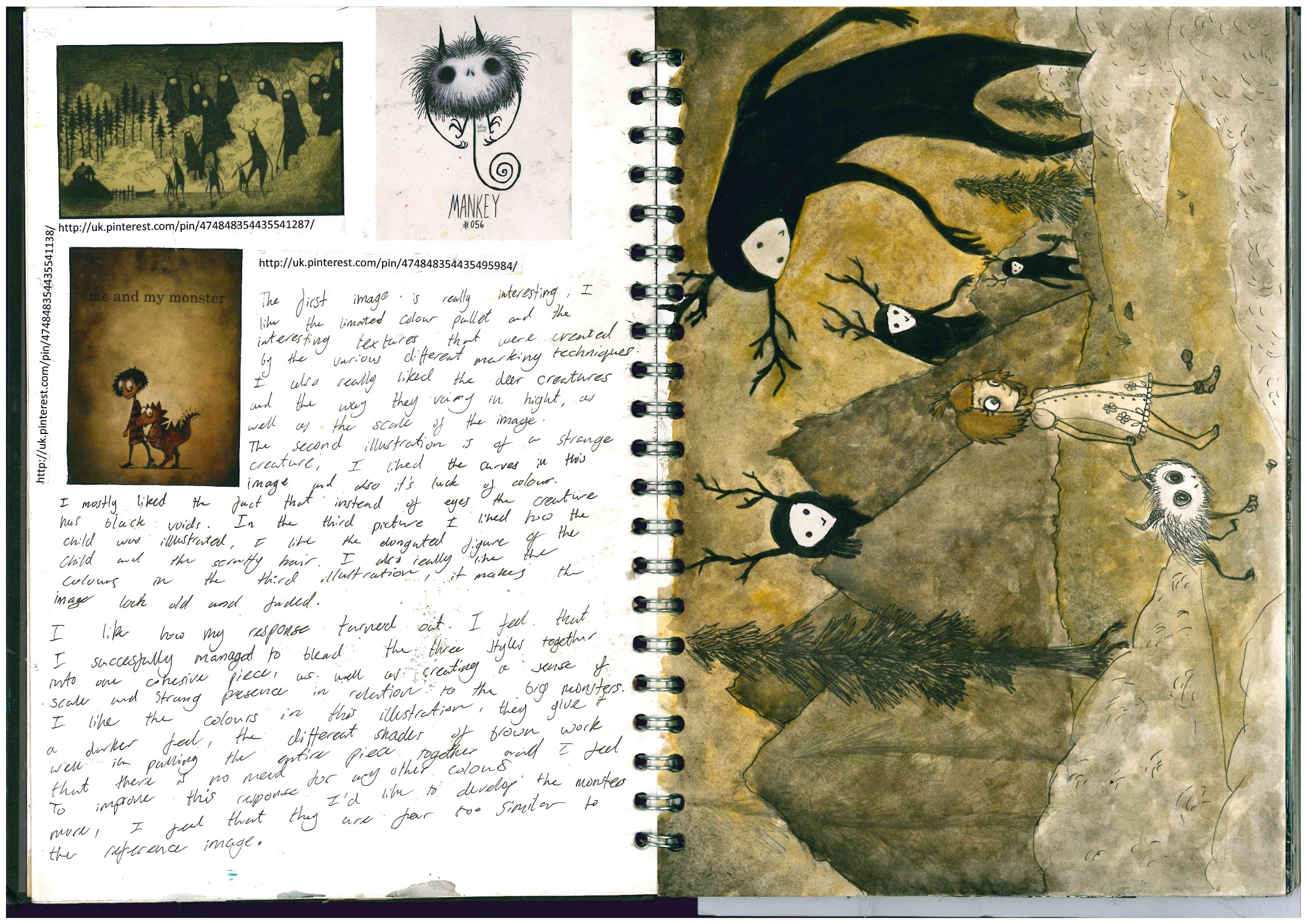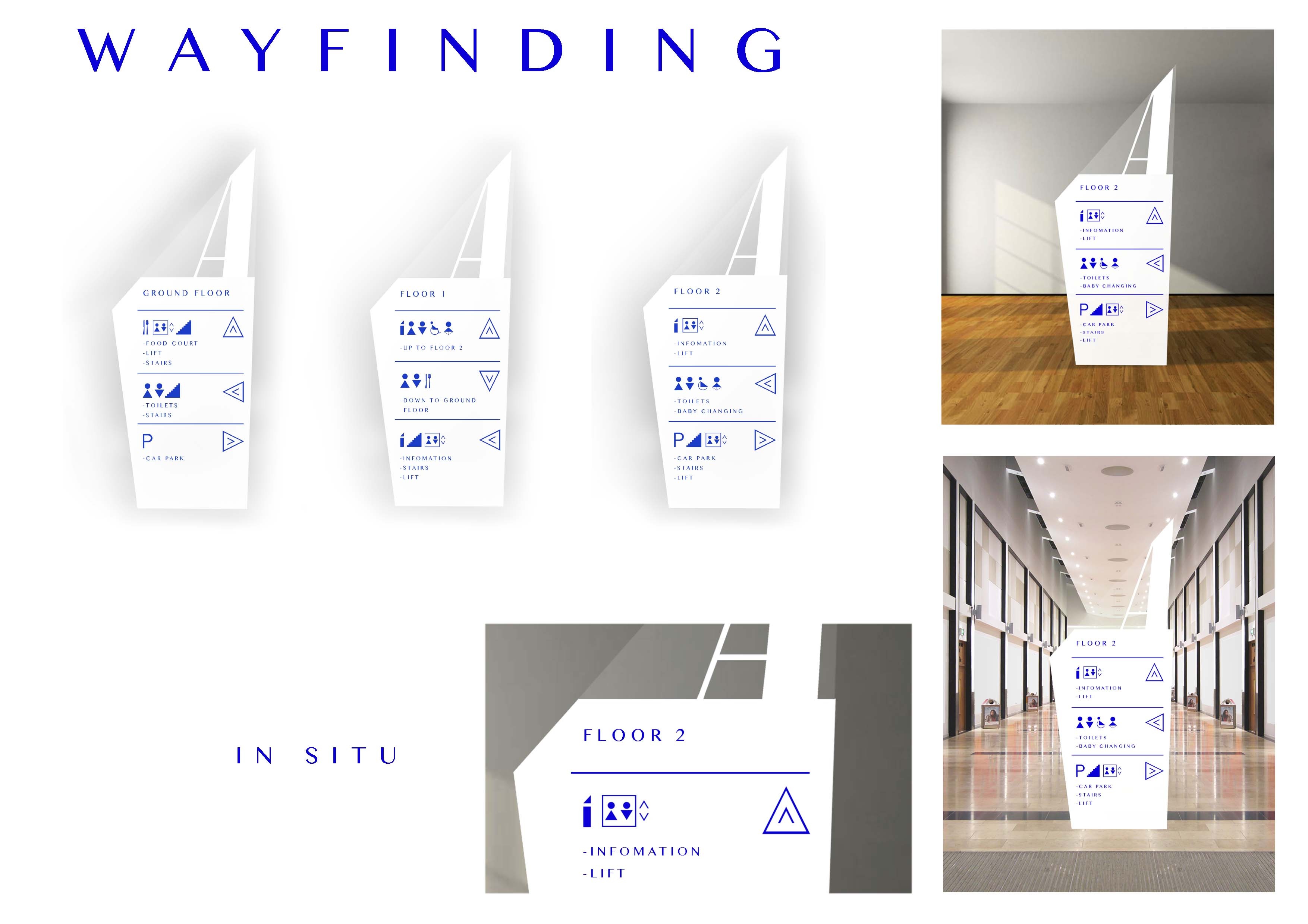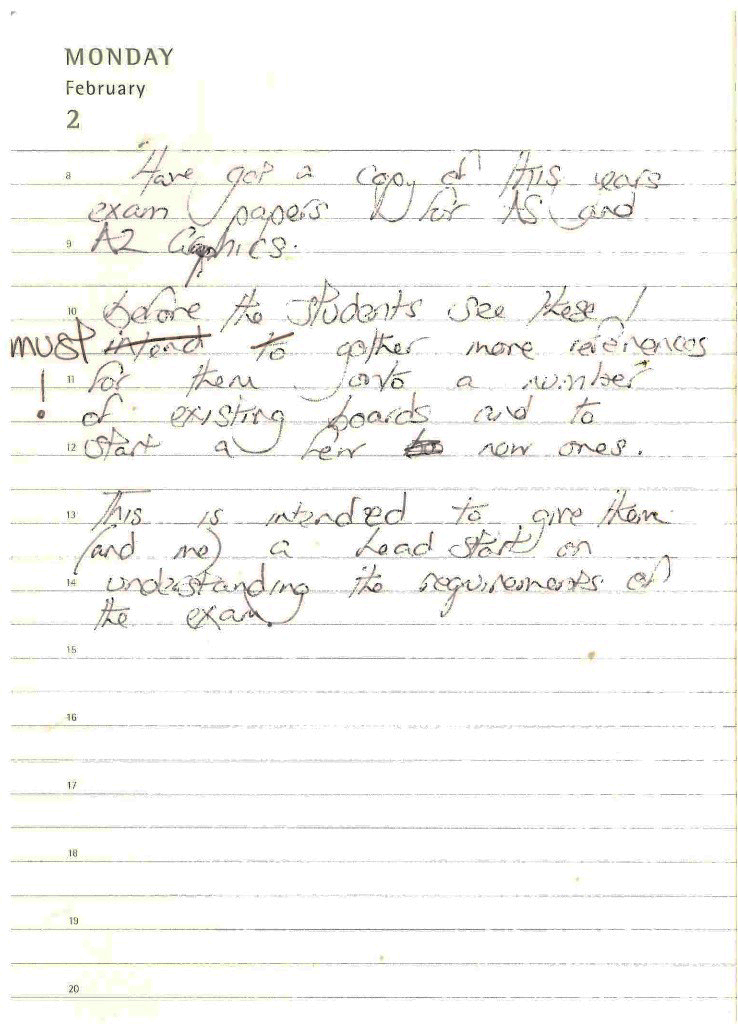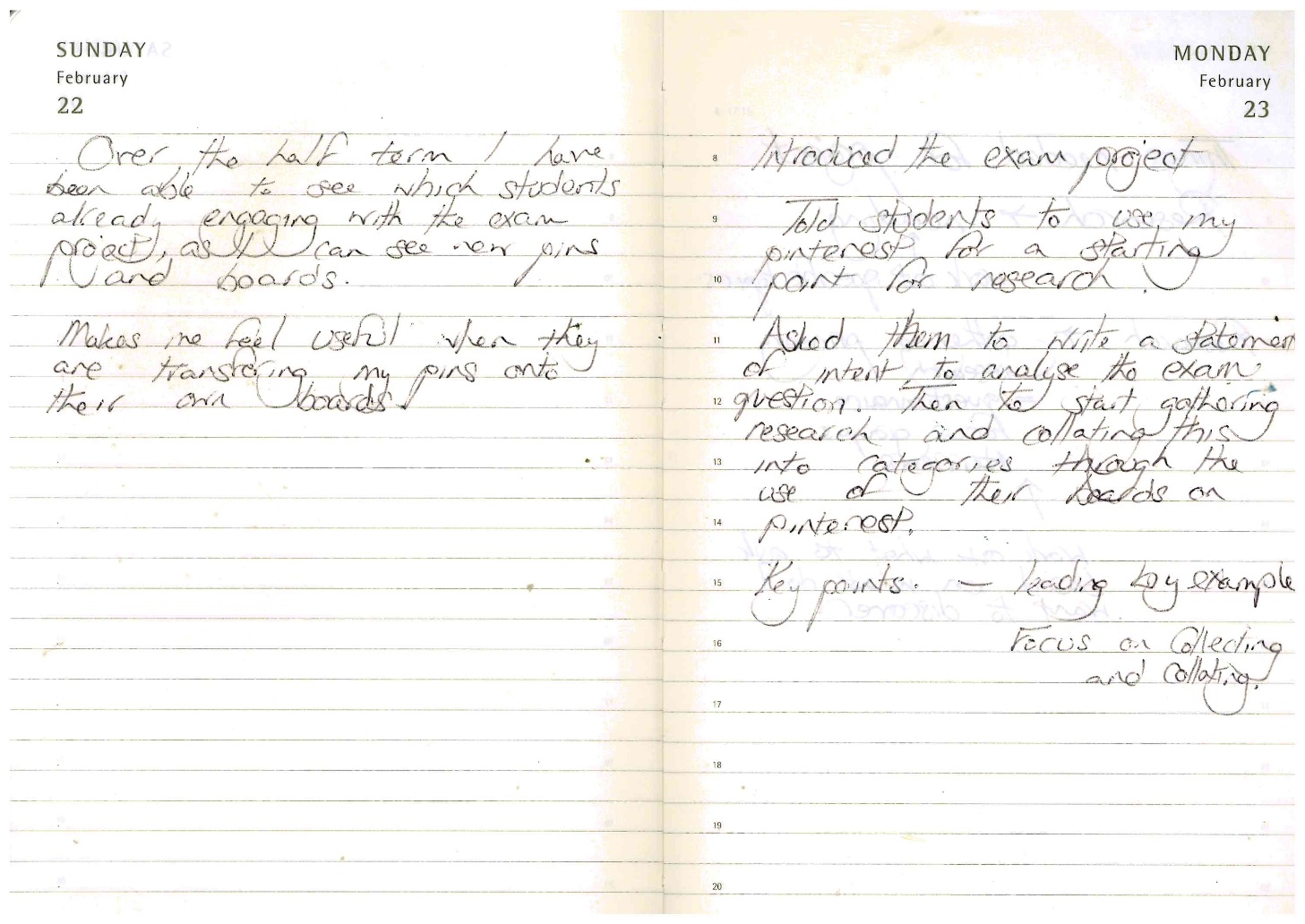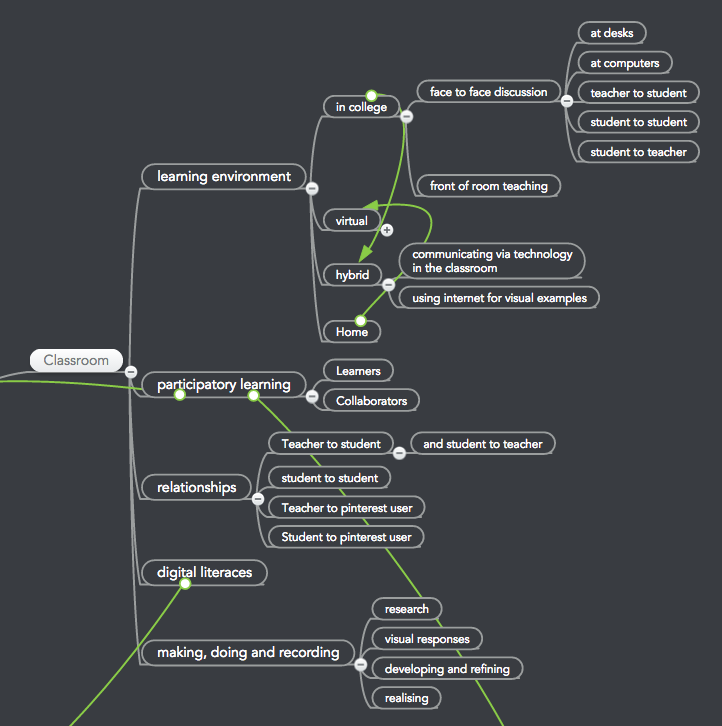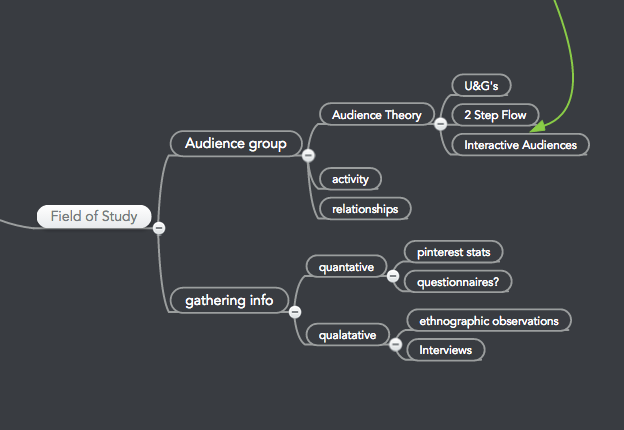This is the survey that was sent out to students on the 18th May 2015, in total 29 students responded.
Results.
Qualitative responses
Q1 – What could you have changed to improve your performance.
- Time management.
- Put more time into my work
- Experimented with more methods and explore a wider range of graphic styles
- Worked a bit harder on my first project as i felt I left too much till too late and had to rush slightly
- better attitude towards work not being as laid back more focused in the lessons performing more work at home and in my own time
- Spent extra time on homework
- I could have ensured that I clearly annotated my thoughts and processes from the first project, however I was not really sure of the process at that point but I am now more confident.
- wokr more in own time
- improve my attendance and actually hand in homework.
- Try different techniques and research to come up with a wider range of ideas for projects
- Focusing on the work
- Made decisions faster, this would have given me more time to focus on an outcome.
- Dedicated more time to developing work at home.
- Started doing work and coming up with ideas earlier on in the project or planned out my project more thoroughly
- Be more proactive/productive all year round instead of just when I needed to be.
- Not a lot I attended all lessons and extras.
- I feel I have worked to a descent level, but not to my optimum. I feel if I was to achieve higher (and this goes to all my subjects) me and fellow college students need more motivation and guidance from all our teachers/tutors, inspiring us to do more and making sure we are up to date with work and are working to our best. Another thing which has hindered is the balancing of all the courses better, as they are all different and different requirements to be achieved in each (and learn) it hard to do it all as well as have a social life.
- I underestimated the amount of coursework i needed to do and my final piece was unpolished because i left things to the last minute.
Q2 – What has been the most valuable thing you have learned during the year, and why?
- Organisation and time management
- the ways that various types of typography can give messages
- How to research properly as it helps give more context to your work.
- I have learnt lots of photoshop skills, last year I only really knew how to use the basic tools but after this year I feel a lot more co dissent with it
- Research and new graphic artists
- Quantity is needed
- I learned a lot about how to layout the designs so they work better and look a lot cleaner and get the information from. Before I didn’t really consider where i was putting elements of the design.
- How to originise time more efficiently
- What I want to specialise in within graphics
- learning different ways of using Photoshop and a range of materials for a end product as it gives a better outcome in then end if a range has been shown
- Photoshop skills
- dedication and using my own time beucase i can then refine my final products and make sure it is the best it can possibly be
- Time management, it’s an important life skill, especially during university.
- I need to manage my time effectively and do a little bit of work each day instead of a lot of work at one time so that I can produce as much work as possible.
- the importance of experimentation and making mistakes
- I learnt that although grades help with your life, they dont decide on your future.
- How to develop my work from different ideas and experimentation to a final design that shows a process
- To experiment with different ideas and improve them but also include them and evaluate them in your work.
- Photoshop skills as it opens up a broader spectrum for you to work within.
- I don’t know
- I have learnt how to use photoshop, this is a valuable tool and I think it will help me in the future.
- to keep up with work and not fall behind
- Managing time, planning outcomes and developing ideas.
- To bulk up books by constant experimentation
- Learning how to truly experiment and try new things in order to get the best outcome.
- loads of things, its been amazing ive learnt lots on photoshop and other softwares needed. Also the typograohy and effort needed to be put in.
- Not to put things off
- The information to achieve high grades within my chosen subjects. In graphics only though it would of have to of been getting the general idea to tackle each work but getting researching doing work then gather more inspiration developing, repeat etc until created that thing. Then linking that into the next part of the project etc. Reason for this is because once you have this basic understood into your mind you can tackle any problem to a high grade.
- The importance of experimenting, recording your process. To take risks.
Q3 – What have you like best about Pinterest
- Organised and collects ideas and themes in a place which data can be recieved and shared easily
- i can find a large range of images
- the ease at which i can compile specific visual resources relating to my brief.
- That you can create different boards and all the images you want are there for you whenever you log on
- Finding new inspiration and ideas
- Easy to use
- Large source of images that are all in one place and can easily be sorted into specific boards which really helps with research and getting inspiration for my own designs
- This has been a huge help when researching and gatherings images to create my own responses
- The great images
- it allowed me to look at ideas that are simmilar to mine and i could then use that information ot inspire my own work
- I liked how you could look at the boards other people have created for inspiration, and that you can follow boards to see what new things have been added.
- When you stick an image in your book and forget to reference it you can easily go back and find it.
- how it can introduce to you sources you wouldnt find otherwise
- helpful for image research
- It keeps all of the resources I have collected in one place so it’s easy to find and it gives relevant images to the search criteria
- I like how Pinterest helps you find more research and helps with design ideas and experimenting with materials.
- Storing any images that could inspire me.
- How easy it is to gather images/research material
- I like the fact I can open pinterest anywhere and check the boards I have created. The boards help with brainstorms and creative ideas, I have been inspired by work I have seen on pinterest and have used pinterest images to start off my project.
- that it is really accessible and easy to use
- Is a clearly structured search engine dedicated to forms of art – unlike google.
- Easy to use and there is a lot of inspiration on there that you can’t usually find on the Internet that easily
- The online storage that it offers. It makes it really easy to bring research together and then be able to access all the different images and all there sources from one place.
- the ranges of ideas you can gather and loads of research
- You can collect all your ideas and store them in one place
- Yes it has allowed me to put the research I collect into one easy place.
- It’s a good resource. You can find alot of great work that’s helpful for research.
(other questions did not require a qualitative response)
Q8 – What do you like about using Pinterest to search for images
- collection of similar themes can be through internet as well as from follwers boards/pins
- That you can find different types of images for one topic
- the way in which they are organised into categories.
- That if you find an image it comes up with related images and that tool is really helpful
- You can look at images unavailable on Google search and explore niche images/styles
- The search results, especially when searching for design related things, tend to be more stylish and better designed than stuff from google which makes them a lot better for research and inspiration. If you were to search for some thing like film posters the results on pinterest are a lot more varied and show a range of styles and designs were as the google results look a lot more generic and are all very similar.
- It’s so precise and easy to find what your looking for
- They are all high quality images
- I like how Pinterest seperates the words into separate sections and how you can find boards full of images that are relevant to what you’re researching.
- I like the fact that doing a search using one key word brings back a variety of images, using different techniques and completed by differing people.
- i think it carries such a variety of images that you find more unique things
- All of the images are relevant and I can easily repin/ like and keep looking so research is quicker and easier
- I like Pinterest as it’s easy to use and has a good range of images and ideas for different topics.
- There is a wide variety of techniques and designs on pinterest that help to influence your work.
- You can pin images you find
- It supply’s images that would not normally be seen in Google. Pinterest also allows uses to comment on what they have seen, I like reading what others think about art work. Other uses can also repin and comment on what you have posted. One image I posted was pinned 93 times and had 18 likes, this helps to give me confidence in the work I’m researching.
- that they are grouped
- It provides a range of results from people who are also interested forms of art/ design.
- Easy and a lot of material
- I like that it is basically a data base that can keep growing. So when you search for am image of an animal for example you can get all different styles of drawing and even more, and you can narrow the search really easily too by searching for something like cat painting.
- it has a brilliant range of all kinds of arts, cultures and lots of things involved they you can really further develop
- It’s very convenient and you can save the images by pinning them
- You can gather a lot of images about a few key words, which is useful then searching the entire internet as they will be more relevant and generally images or videos, which is easier to stick into sketchbooks.
- You can find more relevant images more quickly.
Q9 – Do you think that Pinterest has helped you be more motivated in your Graphics lessons: Please explain your answer:
- Because its allowed me to view images that would normally take a long time to find
- as it allows me to collect images quicker and in turn start idea generation faster.
- It’s given me a lot more inspiration and ideas
- Yes seeing images I like the style of and want to take inspiration from motivates me to do responses
- I find it makes it easier to generate ideas and think about styles as it allows you to view a range of work by lots of different designers quickly and easily which makes it easier to find things that you like and that can help give you ideas for your own project
- I think this because not only did I use Pinterest for my work but also my own interest in fashion and design
- I go to Pinterest for inspiration
- Being able to see all the different products and images that people have created definitely motivates me to create work that can look as professional.
- I don’t think that Pinterest has motivated me however it has made the process of researching easier and more efficient so I can spend more time doing other things.
- it helps me find inspiration if im feeling a bit stumped for ideas
- Being influenced by the work on pinterest that is relevant to my own work and aiding me with my own project
- It helps me find different Ideas and techniques to use in my work.
- The images from other pinners provide me with a lot of inspiration for my own work and motivation to achieve a similar standard of work.
- I think pinterest helps with motivation as you can see other artists and their work. This made me want to try different ideas I have seen online. Other it would be easy to lose track of time while on pinterest, this could conflict with lesson productivity.
- because the images on pinterest were a great example to try to improve my work and get it to those standards
- The work that can be found on there is often inspiring and can influence my own ideas greatly.
- Helps you come up with ideas and get good research pages done in your book with references
- I believe that it makes me more interested in researching for images then I can transfer that into motivation for using them in my projects.
- it allows me to be more confident in what to design as I wouldn’t have very good ideas
- Because I feel like I’m being proactive about my work
- It has helped as it put all my research in one place so I look at it all faster instead of having to find each website. Overall it has speeded the research and inspiration process up therefore making me do more work.
- Not that much really.
Q10 – when you re-pin, do you then visit the source of that image to see where it came from? why or why not?
- yes, to gain more information about the design in reference to your own research and designs
- yes i do because at times i would like to know why they created it like they did
- sometimes it really depends on whether or not im suposed to be cataloging where the images came from or not.
- I often look at the boards it was repinned from
- Yes I do because there may be external links to other external images
- I occasionally do if I like the style of the designer and want to see there other work if it is a link to their website or portfolio bu if i’m just finding a range of things i like for inspiration early in the project i don’t look too much into it
- Yes because they may have a whole board on the topic you are looking for and have a similar preference to you
- I do it on occasion if the pin didn’t include the artists name
- I don’t because the app shows you other pins by the same person and I can tell whether or not the other pins interest me. I think it is quite tedious to add pins from other sites so tend to just reference them in my book and not pin them.
- only if im going to use it in my work , i usually just repin without looking at where it came from
- Occasionally, to see what type of website it comes from (i.e blog or professional website) to learn more about the artist and to see if there are any more images similar, or other designs that could be influential to my own work.
- I sometimes visit the original source of the pin if it has to be included in my work or I want to research further into the idea.
- Not often, I just don’t think about it.
- No, I stay on pinterest for images
- I will go to the source to locate an Artists name or website if I’m interested in there work. However I would normally not look for an image’s source.
- yes, if I want to know more about the image, get more information, I do look at the source
- I do. As it is often an artists main website and I can explore their other works.
- Not usually
- I do visit the source website but most of the time I don’t. I look because sometimes the images of one variation of many and they are on that website, there is no reason why I don’t apart from that I found that image useful so I pinned it and moved on.
- Occasionally if for school; too see the link or if there are similar images / information or to see if I can buy whatever the picture is
- Occasionally I visit the source it depends on what the image is and if I want more like it or that one is fine and provides me with the inspiration I require.
- Sometimes if i really like the image, to se if here is more wok b the am artist, or similar images which i may find useful.

